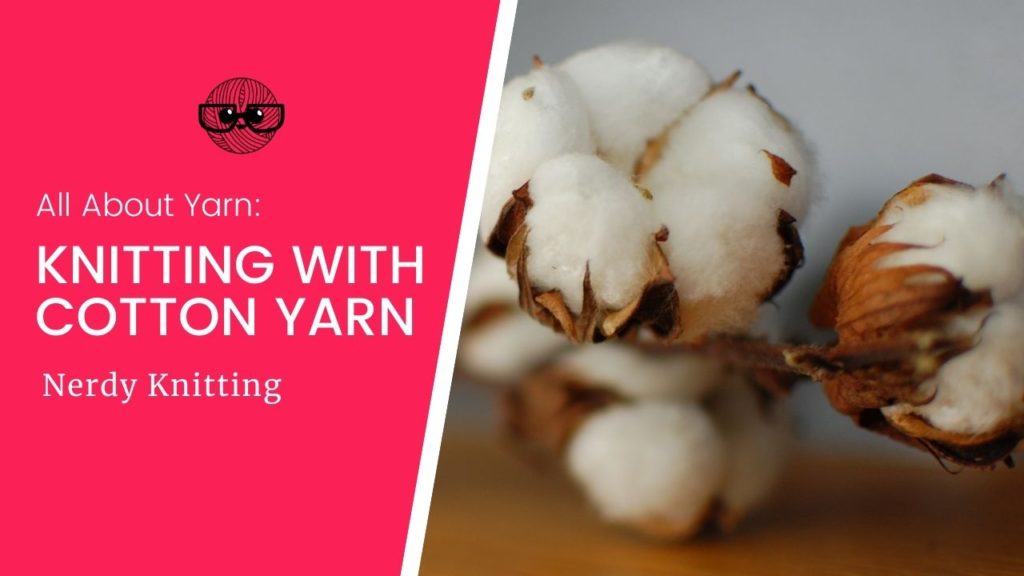Cotton yarn is a popular yarn to knit with (for good reason) but there are some things you need to know before you start knitting with cotton. It has some distinct advantages that make knitting with cotton yarn a dream but it also has some serious drawbacks that need to be taken into consideration before you use cotton as a substitute yarn for a knitting project.
In this article we’ll look at the basic things you should know before you start knitting with cotton yarn.
- Historical facts
- Types of Cotton
- Advantages & Disadvantages
- Knitting with Cotton Yarn
- Choosing Knitting Patterns
- Caring for Finished Projects
- Buying Cotton Yarn
- Basic Questions
Let’s take a closer look at each of these areas. Then you’ll know exactly when to choose cotton yarn for your next knitting project.
Some links below are affiliate links. If you click through and make a purchase I may receive a small commission at no extra cost to you. See the disclosure policy for more information.
The Basics of Cotton Yarn
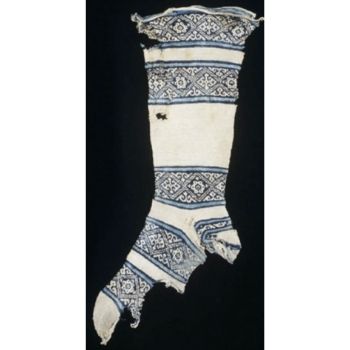
All fibers for yarn can be divided into four broad categories – animal fibers (like wool, silk, and alpaca), plant fibers (like cotton and linen), biosynthetic fibers (like rayon and bamboo), and synthetic fibers (like acrylic and nylon). All cotton yarns fall within the plant fibers category because it comes from the cotton plant and does not require further processing to turn the fibers into a useable yarn (like biosynthetic fibers need).
It’s one of the oldest textile fibers but there aren’t many existing historical pieces because natural fibers decompose over time. But some things have been discovered, include this stocking knit in cotton that was discovered in Egypt in the 12th century. It was knit from the toe up to the leg. The heel was made last (the first afterthought heel?).
Types of Cotton
Grown in hot climates around the world (China, Egypt, South America, and the southern United States are all cotton-producing areas), cotton yarn comes in various grades – with Egyptian and Sea Island cotton at the top of the list.
Upland Cotton is the hard-wearing, lowest grade cotton (often used for those big box store medium weight cotton yarns that we all use to knit dishcloths). 95% of the cotton grown in the United States is Upland Cotton. If a product says ‘100% US Cotton’ then it is most likely this type of cotton.
Pima Cotton is considered the finest cotton on earth with its long soft fibers. It’s durable and strong as well as very soft, producing a strong yarn that’s versatile and useful. Many soft cotton yarns that are commercially available today are made with Pima Cotton.
Egyptian Cotton is actually in the same family as Pima Cotton. The only difference is that Egyptian Cotton is grown along the Nile River in Egypt. But, because their isn’t careful governance in place, it can be difficult to ensure that something labeled Egyptian Cotton is actually what it says it is.
Sea Island Cotton was originally grown in the low-country of South Carolina and is extremely soft and strong. Queen Victoria actually had her handkerchiefs made especially from this cotton. But because of a variety of factors, it was almost wiped out. Thankfully, it is still cultivated today. But now it’s primarily grown in the Caribbean instead of South Carolina.
There are actually more cotton variants (see the articles linked below for more information) but, for knitting, most yarns are made from either Upland Cotton (that hard-wearing dishcloth yarn) and Pima Cotton (softer yarn suitable for garments). But you can find the other cottons occasionally as well (like this Plymouth Yarn Sea Isle Cotton Yarn from Webs – which uses Sea Island Cotton in a chainette construction).
Sources : Types of Cotton – Pimacott and The Types of Cottons You Should Know
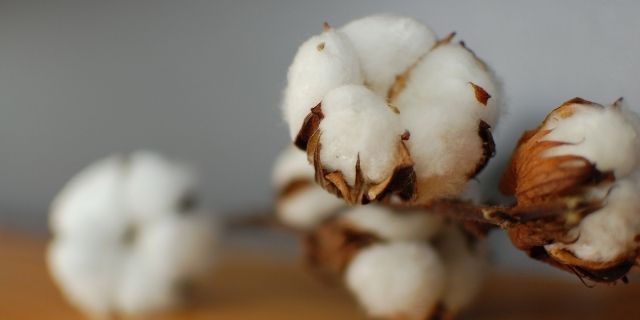
The Properties of Cotton Yarn
Cotton yarn has its own distinct advantages and disadvantages that knitters should be aware of before they start knitting with this versatile fiber. While it can be a great yarn for a lightweight summer top or a hard-wearing dishcloth, there are times you will want to avoid cotton (or choose a cotton blend instead).
Advantages of Cotton Yarn
Cotton yarn has some distinct advantages that make it valuable as a fiber for knitters. Cotton is:
- Soft
- Non-allergenic
- Absorbs moisture
- Dries quickly
- Breathable
- Durable
- Strong when wet
A soft cotton sweater or tank is perfect on a hot summer day or for a child’s easy-care garment. Other types of cotton (usually Upland Cotton) make great dishcloths and washcloths that absorb water and dry quickly.
Disadvantages of Cotton Yarn
While there are many reasons to use cotton yarn, it does have some drawbacks that you should be aware of. Cotton is:
- Non-elastic
- Prone to stretching
- Heavy
These disadvantages are clearly in evidence when a new knitter finds a sweater knitting pattern that uses a wool yarn and decides to use cotton instead. Since cotton has these distinct drawbacks, that sweater will be heavy and sag with time because the pattern was not meant to be knit in cotton.
This is something knitters need to be aware of – the heavier weight of the fiber and its lack of elasticity will cause anything knit in 100% cotton to sag and lose its shape over time. Don’t expect any knit rib patterns to hold their shape when worked in cotton yarn.
Because of these disadvantages, cotton yarn is often blended with other fibers (a cotton wool blend is lovely) or it may be spun to create a lighter yarn. For example, a chainette yarn construction brings additional structure to the inelastic nature of cotton fibers and gives it a natural lightness.
As long as the knitter is aware of these disadvantages and keeps them in mind when choosing appropriate projects for their yarn, cotton can be wonderful to knit with and create beautiful hand knit garments or home accessories.
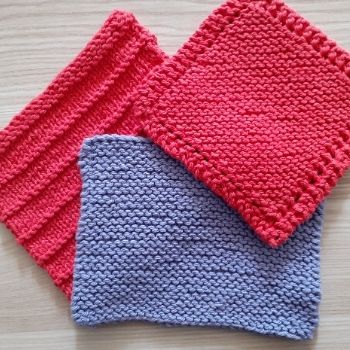
Knitting with Cotton Yarn
Because of the different grades of cotton fibers, various cotton yarns will feel and act differently as you knit them. For example, the medium weight cotton yarn that’s often found in big box stores can feel tough and hard on the hands while knitting. On the other hand, a soft Pima cotton like Knit Picks Billow has a soft hand and feels lovely to knit with.
One yarn isn’t necessarily better than the other – it’s just that they serve different purposes. The big box Upland Cotton yarns are great for dishcloths while the softer Pima Cotton is ideal for garments (especially baby clothes, when you want something soft against the skin as well as washable and easy to care for). And, if you want something even softer and more luxurious, look for a Sea Island Cotton yarn.
Get the Yarn Substitution Checklist
Fill in the form below to get a free copy of the Four Step Checklist for substituting yarn. Use it for your next knitting project!
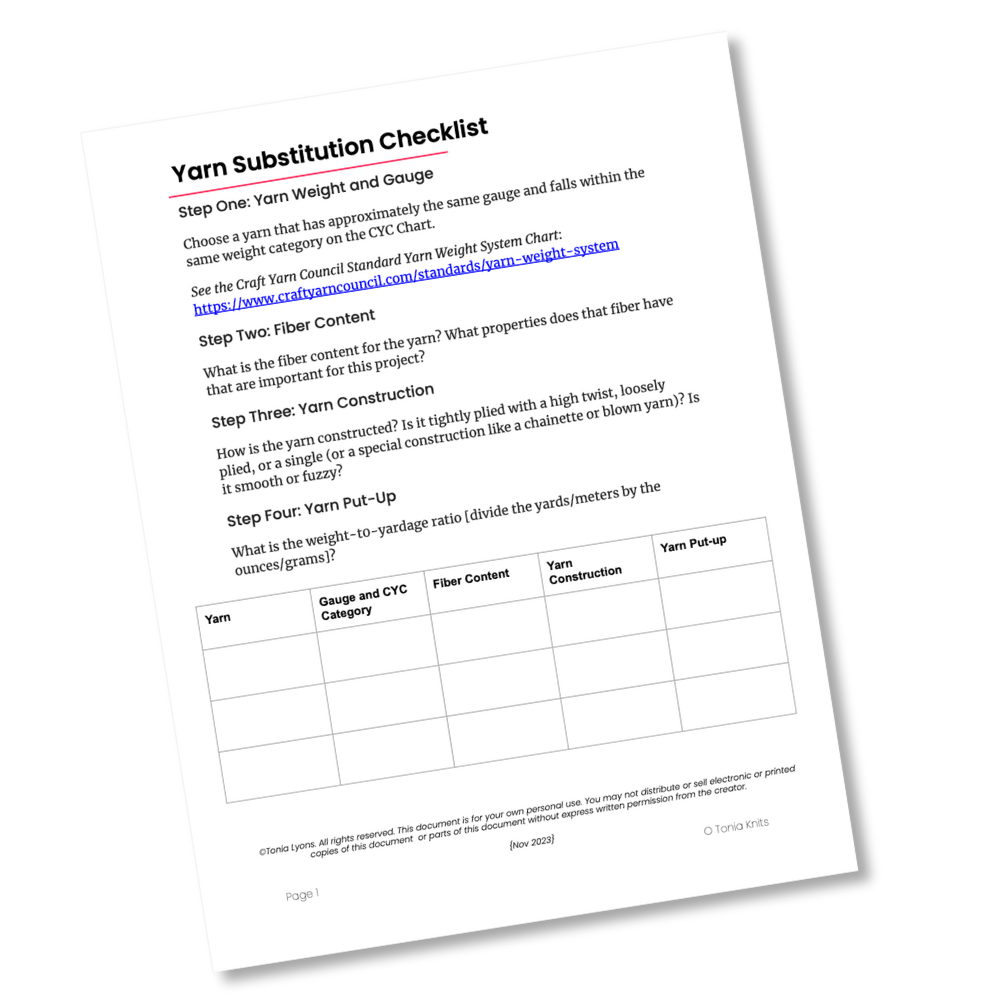
Selecting Appropriate Knitting Patterns
As we’ve already discussed, cotton yarns have their own distinct advantages and disadvantages and you will want to keep these in mind when selecting an appropriate knitting pattern for your yarn. One easy way is to simply select a pattern that used a cotton yarn to knit the sample. The designer would have taken the properties of cotton yarn into account when designing the garment.
But you don’t have to just choose from knitting patterns that specifically used cotton yarns during their design process. Just keep the disadvantages of cotton yarn in mind and follow a few simple guidelines when you’re looking at patterns (especially as it applies to sweaters and tops).
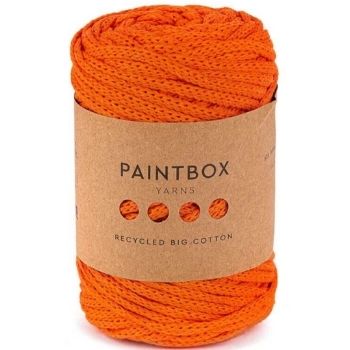
- Choose patterns that use seams – those seams provide some additional structure that cotton yarn naturally lacks.
- If the pattern is seamless, look for a cotton yarn that has some additional structure built in – the construction of the yarn itself (like a chainette yarn which looks like an I-cord) provides some structure and lightness (see Paintbox Yarns Recycled Big Cotton as an example).
- Avoid heavily textured designs (like cables) – the inelastic nature of cotton highlights all the tension issues and projects with cables take more yarn (which equals more weight).
While these are good guidelines to follow if you’re looking for a sweater pattern, you don’t have to be so concerned for home goods like placemats or dishcloths. Since those types of items will usually be placed on a flat surface you won’t get as much sag and droop from the stretched out, heavy cotton.
Cotton and cotton blend yarns are great for:
- Summer tank tops and tees
- Lightweight shawls
- Baby items (cardigans, blankets, soft baby caps)
- Lacy doilies, coasters, curtains, or bookmarks
- Dishcloths, hand towels, and washcloths
- Placemats or Bathmats (a recycled t-shirt yarn is great for these)
Caring for Projects Knit in Cotton
Cotton yarns are generally easy to care for (but you’ll always want to check the yarn labels just in case). They are usually machine washable and can often be put in the dryer as well.
This makes them ideal for summer garments, clothing for children, and home accessories because those items generally need to be washed more often.
Simply wash (the gentle cycle is still a good idea for hand knit garments) and dry (tumble dry on low heat) when needed.
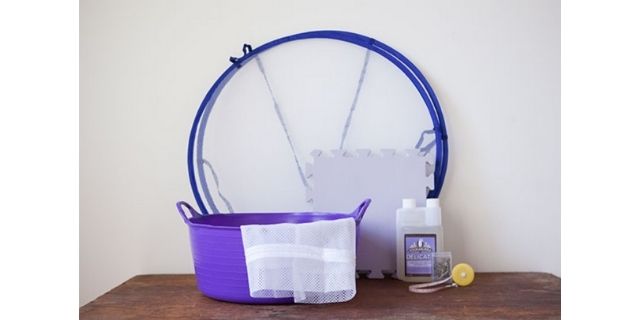
How to Block Projects Knit with Cotton
Projects knit in cotton yarn don’t need any special blocking techniques. (At its simplest, blocking is just caring for your hand knit garments.) If washing and drying or following the care instructions for the yarn doesn’t produce the result you want or if the project has some lace that you’d like to open as much as possible, steaming is a good choice.
Pin the garment to its final shape and finished measurements on a blocking mat, being careful to stretch any lace or other openwork designs to showcase them. Use a handheld steamer or iron to apply steam to the garment, holding the steamer or iron above the garment (and not pressing the appliance directly to the garment). An optional step is to place a pillowcase in room temperature water until soaked. Wring out any excess water and place the wet pillowcase over the garment. A hot iron can be placed directly on the wet pillowcase to steam block the cotton garment, moving the iron until the pillowcase is dry.
Buying Cotton Yarn
As we’ve already discussed, you will want to choose your cotton yarns based on how they will be used. 100% US Upland Cotton is great for dishcloths as it’s strong and durable. A softer Pima Cotton is a better choice for a garment. Cotton is also commonly blended with other fibers to reduce some of its drawbacks. Blending cotton with wool adds some elasticity, softness, and lightness to an otherwise heavy fiber.
Here’s a short list of some recommended cotton yarns and blends.
Cotton Yarn for Dishcloths
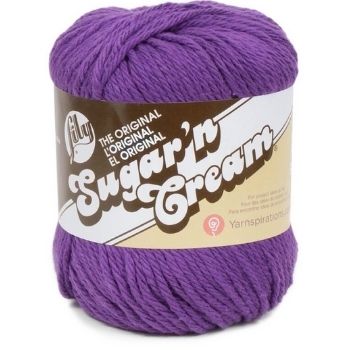
This yarn (usually Upland Cotton) is durable and sturdy and works well for dishcloths, mats, or when you want a sturdy workhorse yarn.
Soft Cotton Yarns
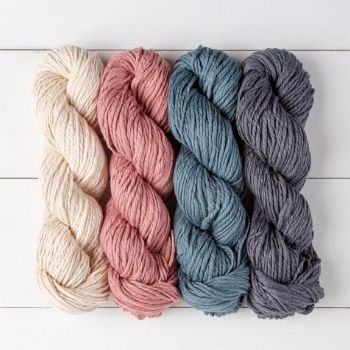
While the cottons listed above are great for household goods, you’ll definitely want a softer cotton for garments or baby things. These are some beautiful yarns that make great lightweight summer tops or baby cardigans or blankets. Anytime you want a soft cotton, these are great choices.
- Cascade Ultra Pima
- Rowan Handknit Cotton
- Knit Picks Billow
- Knit Picks Memento
- Berroco Pima 100
- Lion Brand Pima Cotton
Cotton Blends
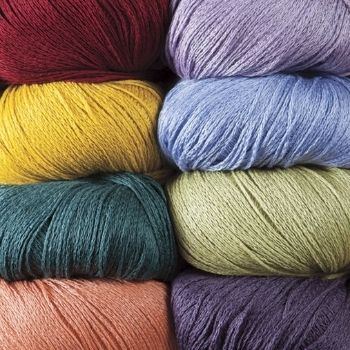
While cotton can certainly be used by itself, it works very well in various blends where other fibers can mitigate some of cottons disadvantages. When it’s blended with wool it makes a great all-weather garment (wool adds warmth, elasticity, and lightness while cotton makes it durable and adds additional softness). But cotton can also be blended with other plant fibers like linen or bamboo to create a lightweight yarn that makes beautiful summer garments and shawls with wonderful drape.
- Universal Yarn Bamboo Pop
- Lion Brand Coboo
- HiKoo CoBaSi
- Knit Picks Cotlin
- Knit Picks Lindy Chain
- Knit Picks Shine Sport
- Knit Picks Kindred
- Valley Yarns Southwick
- Valley Yarns Granville
- Berroco Modern Cotton
Mercerized Cotton
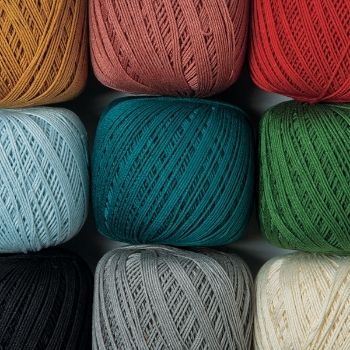
Mercerized cotton is created by coating the cotton fibers in sodium hydroxide before washing. This increases the tensile strength, shrinks the fabric, and makes it more easily absorb various dyes. Many mercerized cottons also have a sheen or noticeable lustre. This type of cotton is very commonly used for lace weight doilies but it does also have other uses.
Here are a few recommendations for mercerized cotton:
- Lion Brand 24/7 Cotton
- Scheepjes Catona
- Knit Picks Curio
- Patons Grace
- Tahki Yarns Cotton Classic Yarn
More About Knitting with Cotton Yarn
If you still have questions about knitting with cotton yarn, here are a few of the commonly asked questions related to cotton yarn – and the answers!
The Environmental Impact of Cotton
While cotton is a natural fiber and extremely popular throughout the world (it’s used more than any other fiber in the world), it takes a great deal of water, fertilizer, and pesticides to grow cotton in large amounts. Naturally, this has a detrimental impact on the environment. Because of these factors, organic cotton has grown in popularity because it has less of a harmful impact.
Here are a few organic cotton yarn recommendations:
And some recycled cotton yarns:
Does cotton yarn get softer with washing?
Just like your favorite pair of blue jeans, cotton yarn does soften with use and washings. The fibers relax and get softer the more they are used and washed.
Is cotton yarn durable?
Cotton yarn is durable and strong and actually becomes stronger when the fibers are wet, making it a great choice for hand knit dishcloths and washcloths.
Is cotton yarn good for blankets?
Cotton yarn is a great choice for blankets. Depending on the type of cotton, it can be lightweight and still warm. Cotton yarn is also easy to care for and finished blankets can be machine washed and even placed in the dryer. It’s a great choice for a baby blanket when easy care is needed.
More About Yarns & Fibers
- The Knitter’s Book of Yarn by Clara Parkes (available at Amazon)
- Yarn Substitution Made Easy by Carol J. Sulcoski (available at Amazon)
- Knits from the Greenhouse by Cornelia Bartlette (available at Amazon)
- Yarn Garden: 30 Knits Using Plant-Based Fibers by J. Marsha Michler (available on Amazon)
Related Knitting Articles
- Knitting with Linen Yarn: Everything You Need to Know
- The Beginner’s Guide to Knitting with Hemp Yarn
- All About Knitting Bamboo Yarn: Everything You Need to Know
- A Beginner’s Guide to Yarn Substitution
